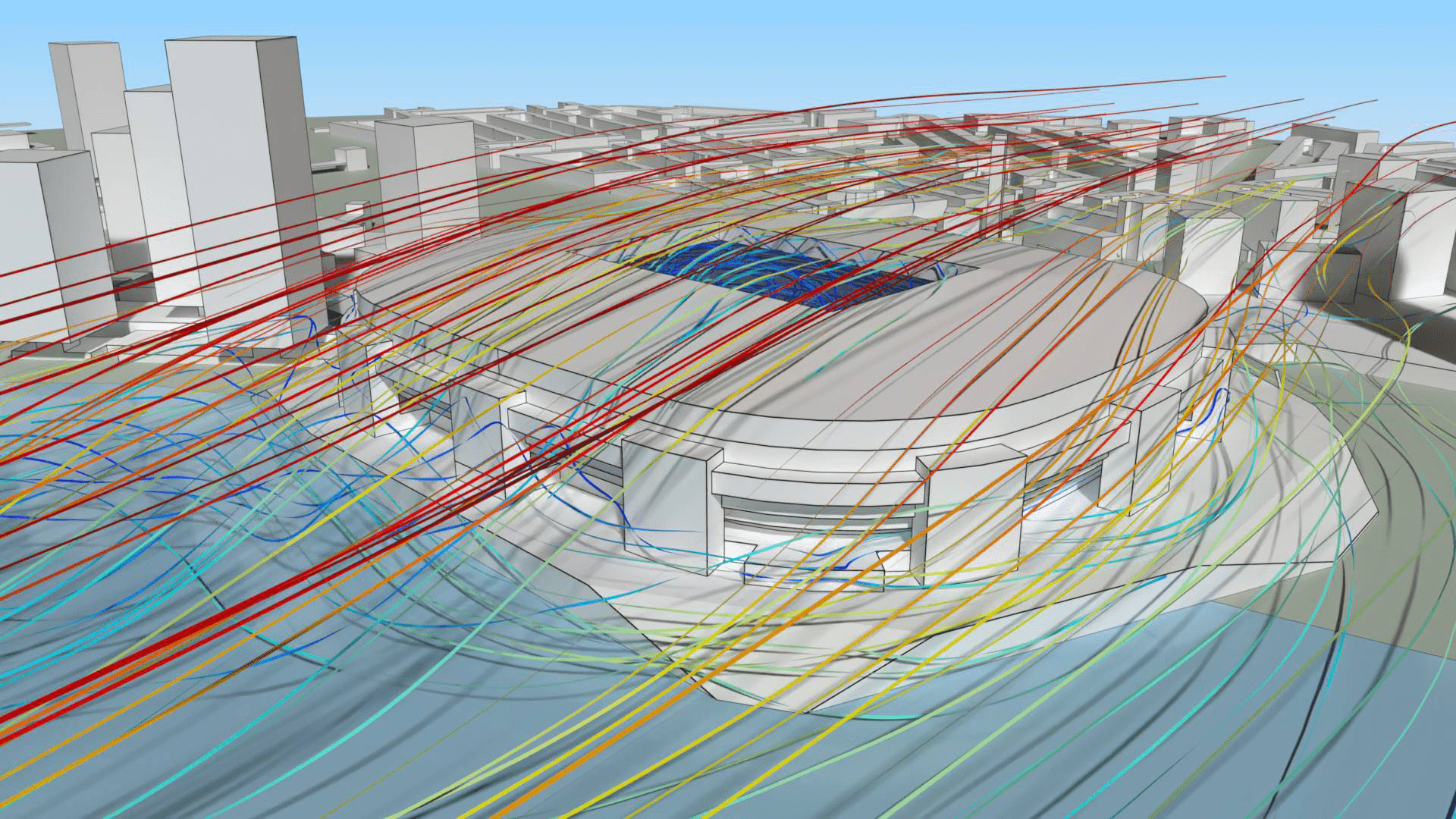Wind and fluid engineering
From pedestrians forced into danger by high winds to threats to the Netherlands’ heritage windmills. The movement of wind and gases can have wide ranging effects and implications for a project, design or facility.
get in touchget in touch
Informed by decades of experience and the expert application of Computational Fluid Dynamics (CFD), our team of engineers can shed light on how the flow of wind, and gases might impact your project starting from the earliest design stages to full realisation.
Helping you shape designs that can go beyond compliance to set the standard; while avoiding the need for expensive mitigation methods later down the line.
Helping you shape designs that can go beyond compliance to set the standard; while avoiding the need for expensive mitigation methods later down the line.
Protecting pedestrians from discomfort
The best cities in the world are defined by the way they make you feel. And comfort for residents and tourists as they walk the streets is defined by considered design and architecture.The construction of a building inevitably changes the microclimate in its vicinity. In particular, high-rise buildings can introduce high wind speeds at pedestrian level, which can lead to uncomfortable or even dangerous conditions. The design of a building should not only focus on the building itself but also the effect of the design on the outdoor environment.
Prevention is better than cure in these situations, and a good wind climate gives extra points towards BREAAM certification. In the Netherlands, buildings 30m+ in height are required to take different steps to consider impacts on wind climates.
Our ‘wind designers’ can take the lead for you, emphasising sustainable ways of dealing with wind. Our knowledge covers long-standing codes like the Dutch standard, NEN8100, as well as others like Lawson and Davenport. From a simple quickscan of a proposed building or development to an extensive wind comfort study. We can provide advice at the required level of detail.
Designing for flows and fluids
Beyond the natural occurrence of wind and its implications on buildings and their surroundings, buildings themselves contain hot and cold air flows and particulates. Whether it’s the flow of air conditioning in an office building or the dispersion of hot or toxic clouds produced as a by-product of a factory.Our engineers can use digital modelling involving Computational Fluid Dynamics to provide clarity on how these often-invisible forces act and interact within your building and surrounding areas. Helping you optimise your design, identify potential issues and reduce risks.
With our ability to integrate our state-of-the-art modelling into your 3D BIM models, we can align and streamline your workflows for the most robust outcomes in design, engineering excellence and safety.
Human expertise, computational accuracy
Digital innovations continue to shape and re-shape our work – offering greater accuracy, smarter designs and more reliable outcomes.Through modelling systems and approaches, like Computational Fluid Dynamics, we are breaking down the limitations of what we can do. There are no scaling problems or limits to geometric size of our models – and results can be presented parametrically, at greater speed and linking to 3D CAD geometry. In a digital model, results can be obtained everywhere in the model, not only on selected measurement points. Finally, changes in the digital model are easy to make, allowing us to assess in short time which design changes are most efficient.
Behind the screens, our engineers use a depth of experience and expertise to turn data and analysis into informed decisions for your project and your needs.
Peace of mind, delivered at speed
With the tools at our disposal, and our understanding of wind and fluid engineering, we collaborate with your architects, designers and stakeholders to deliver robust, reliable solutions.From the beginning of a design process to addressing an existing building and all design stages in between. We can deliver multiple simulations at speed – providing different ways of seeing your needs and a number of options to address them. Giving you peace of mind.
A diverse project portfolio
From high-rise buildings to housing, offices and hotels to the heritage of the Dutch windmill. Our work in this sector is diverse, and standard-setting – particularly in our home in the Netherlands. Where some of the first national standards for wind climate assessments have been developed and honed.As part of the wider Royal HaskoningDHV family, our engineers are able to support, and be supported by, specialists across disciplines and sectors. So regardless of your specific needs, challenges and requirements – we can deliver.